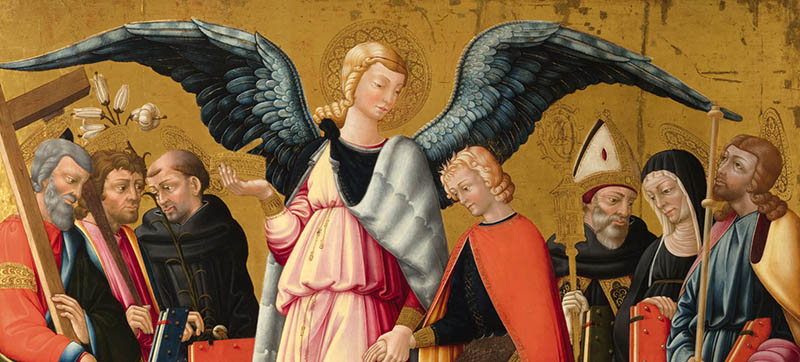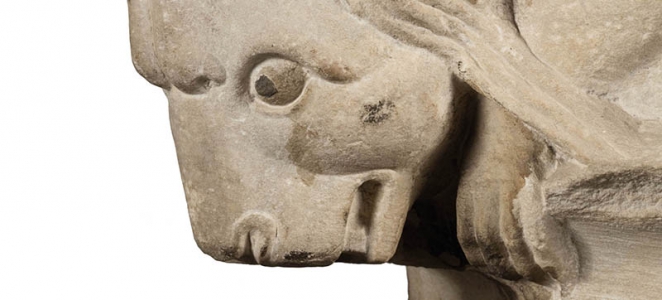by Vittorio Natale
“Such innovative energy will place Giancarlo Gallino, when the history of collecting and the market in the Twentieth century is written, in a position of some importance”, one of Italy’s most important contemporary antique dealers wrote in 2011 when recalling his elder colleague. Today, after a few more years, that very judgement needs to be once more fully confirmed and emphasised, now that any polemic accompaniment to such comments has faded away, comments that inevitably – in Italy, at least – accompany any profound attempt to suggest or create change. Despite the fact that such comments are in no way historical pronouncements they represent, in any case, objective and impartial opinions.
In the last few years of what is already called “the last century”, the Galleria Antichi Maestri Pittori (The Gallery of Ancient Masters) belonging to Giancarlo Gallino played a highly significant role in creating – first, in Turin and then all over Italy – a new way to experience the role of the antique dealer. The antique dealer was no longer an interpreter of taste and a vehicle for the great collectors of the day but he or she was also an active promoter of a new sort of interest in old art and, in their own particular ways, antique dealers became “arbiters of taste”.
With such an intelligent and far-sighted approach, Gallino was more than probably able to make the most of the most important professional experiences that he had had in his previous “lives” – as well as exploiting his own particular character and unprejudiced determination – his life as a painter and, above all, his life as a sales manager in one of Italy’s most famous fashion companies of the time. These were all characteristics which were rather unusual in the world of antique dealers and, along with the support of a fervent passion for art, they bestowed upon him an approach that was both original as well as creative.
In addition, Gallino possessed an instinctive ability to choose talented colleagues and consultants. He formed an almost symbiotic professional relationship with a young antique dealer with a certain amount of experience, such as Ezio Benappi, who descended from a family of antique dealers. He also worked with art historians who were the most celebrated and the most skilled of the time such as, in first position, Giovanni Romano as well as Luciano Bellosi, Enrico Castelnuovo and Massimo Ferretti. Beside these more famous names, there was a combative group of young scholars who made the most of an opportunity to practise their skills in such a unique arena. Today, these very scholars work in some of the most important positions in public institutions. The most refined forms of collecting and the market surrounding it as well as the world of academia – until that time a little suspicious of the Galleria – worked and interacted with the Galleria’s highly active sense of enterprise and initiative.
Each and every work of art that passed through the Galleria, breaking the tradition of sympathetic and often anonymous catalogues, was entrusted to an external art historian for study and was objectively described in terms of its state of preservation. The actual descriptions that started to enter into the catalogues of the annual exhibitions – in which new acquisitions were presented for the first time – were serious and brief scientific essays that are often still today essential reading for those of us who seek further study of those artists that were shown. Such exhaustive examination of the works offered – always impeccable in terms of preservation – did not merely offer a reassuring guarantee by an external expert, but also an appropriately succinct and an often new take on the works – within their particular own context – as well as their very value, even in commercial terms.
Especially at the very beginning, the Galleria played a primary role in the study and the estimation of antique Piedmontese art in which the Eighteenth century had drawn, until that time, inspiration from the greatest moments of the career of the antique dealer, Pietro Accorsi – undisputed protagonist of both the tastes of the time as well as the market. Along with artists such as, Spanzotti, Gandolfino da Roreto, Defendente Ferrari and Macrino d’Alba, the Galleria reared a new generation of collectors whilst the local museums – the Galleria Sabauda, the Museo d’Arte Antica (The Museum of Ancient Art) in Palazzo Madama and the GAM (Modern Art Gallery) GAM – were able to add to their collections thanks also to the substantial donations awarded by private foundations with works by Pietro d’Alba, the Maestro of Boston, Antoine de Lonhy, Ambrogio da Fossano and Gaudenzio Ferrari as well as Giovanni Migliara and Pelagio Palagi, hailing from the legendary collection of Baldassarre Ferrero.
From 1993, with the arrival and involvement of Giovanni Agnelli on behalf of Lingotto Fiere and Federico Zeri in the role of President of the Scientific Committee, the system that had been very happily experimented in the Galleria was then also offered to Europe’s most important antique dealers with the invention of “Arte Antica”. This first exhibition and the four successive editions of the antique biennale were characterised by a totally new formula that had never before been experimented in the world with such success. All the works being presented were published in the catalogue only after having been inspected pre-emptively by a scientific committee made up of the most eminent international experts of both the artistic techniques and typologies of the various artists, selected from the university and museum worlds such as Andrea Bacchi from the University of Trent, Rossana Bossaglia from the University of Pavia, Enrico Castelnuovo from Pisa’s Scuola Normale Superiore University, Andrea De Marchi currently at the University of Florence, Everett Fahy from New York’s Metropolitan Museum, Massimo Ferretti from the University of Bologna, Mauro Natale from the University of Geneva, Anna Ottani Cavina from the University of Bologna and Carmen Ravanelli Guidotti from the International Museum of Ceramics in Faenza.
Throughout these years, Giancarlo Gallino was able to work with pieces of art that were of the utmost quality and exceptional value. Among these works there were the two panels by Antonello da Messina that were acquired by the State in 1996 for the Uffizi Gallery in Florence where they were recently reunited with the third panel that belongs to Milan’s Museo del Castello. Thus, a triptych was recreated displaying such a revolutionary perception of light and perspective. Further works were represented by the Giotto-esque Annunciation giving its name to the “Maestro della Annunciazione Spinola”, the painting with Saint Peter the Martyr and Saint Thomas d’Aquino before the Crucifix by Beato Angelico, the terracotta work by Alessandro Algardi with the Ecstasy of Saint Philip Neri for the altar of the Roman Church of Santa Maria in Vallicella as well as the amazing work by Canova for the Three Graces, studied by Hugh Honour, the world’s greatest scholar of Neoclassicism.
In addition to this sequence of masterpieces, there were also two works from which signor Gallino was unable to separate himself – in his all too short professional career – and that are now being sold by his heirs. The first work is unique in terms of absolute appeal, provenance and historical value. It is a capitello decorated with figurative designs that, as reconstructed by Enrico Castelnuovo in his study undertaken for signor Gallino in 1990, comes from the third loggia of that symbolic monument for Italy’s cultural and artistic heritage, the Leaning Tower of Pisa. The piece was most probably taken away during nineteenth-century strengthening works of restoration along with a further identical capitello – in terms of its structure – that is today kept at Pisa’s Museo dell’Opera del Duomo. The second work is a large square painting that is overflowing with gold and polychrome a tempera, by Neri di Bicci almost definitely shortly after 1475. It depicts the Archangel Raphael and Tobias accompanied by six Saints with, in the lower part of the painting, the trompe l’oeil representation of a tabernacle. It is the expression, extraordinary on account of its preservation, of the very culmination of Florentine art during which the very latest elements of the Renaissance were divulged within a communicative and efficiently expressive style that was so typical of this particular protagonist of Tuscan painting during the Fifteenth century.





